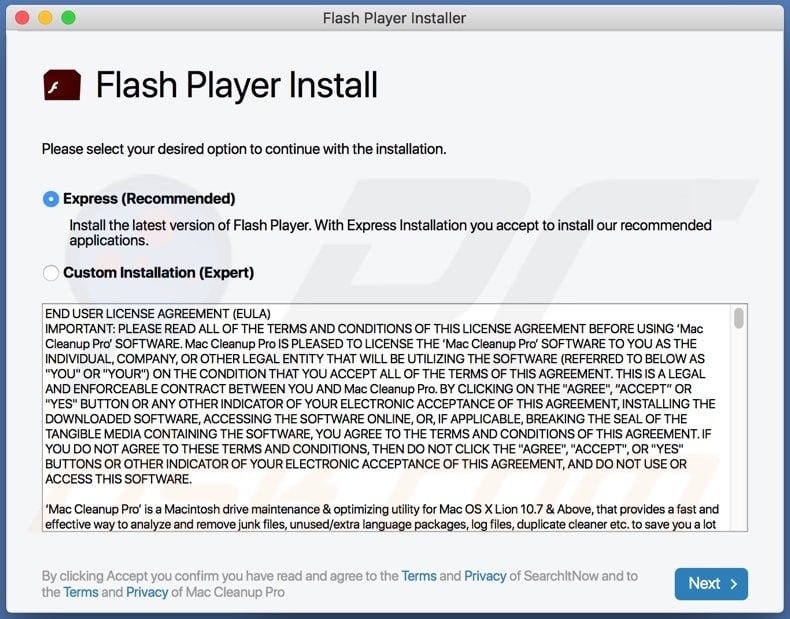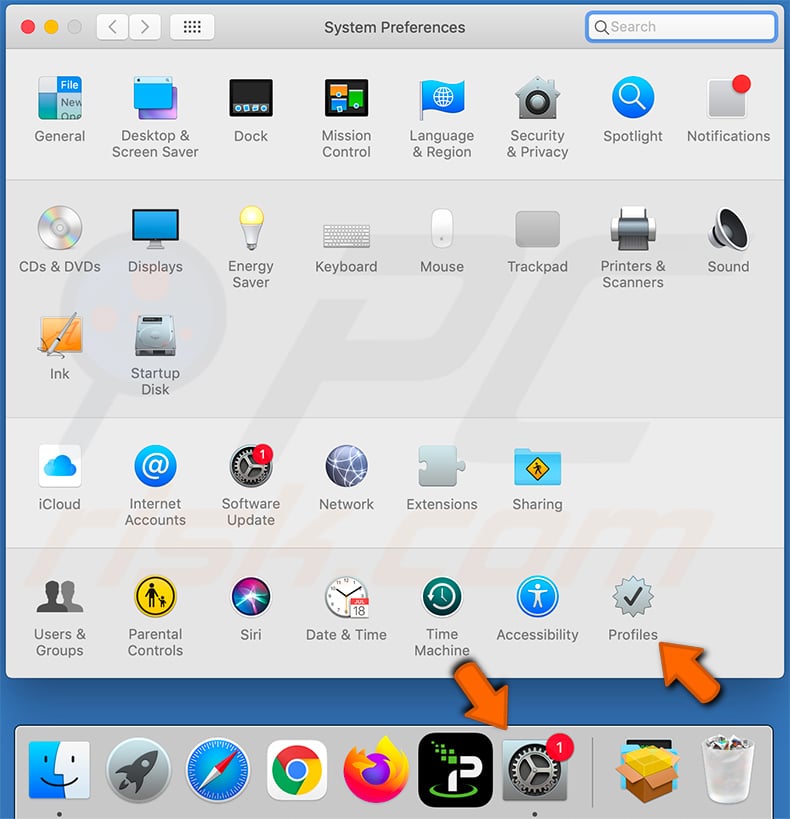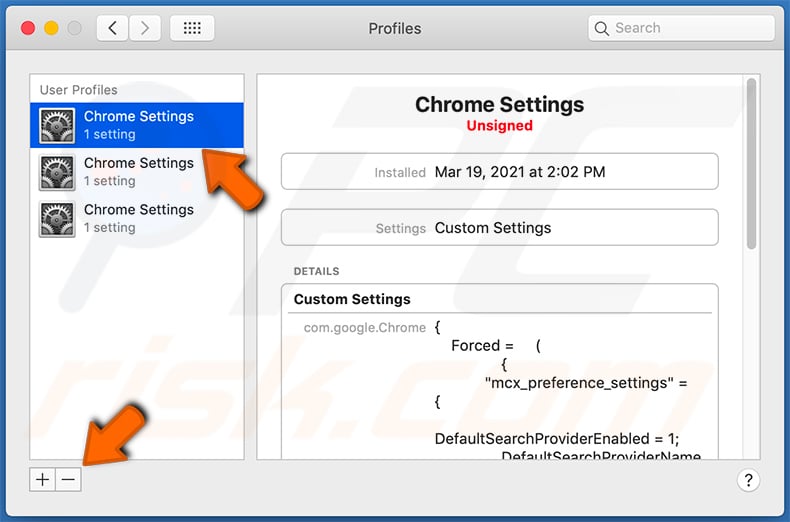Get free scan and check if your device is infected.
Remove it nowTo use full-featured product, you have to purchase a license for Combo Cleaner. Seven days free trial available. Combo Cleaner is owned and operated by RCS LT, the parent company of PCRisk.com.
What is NetFunctionSearch adware?
Typically, users download and install applications such as NetFunctionSearch unintentionally. Therefore, they are categorized as potentially unwanted applications. This app is distributed through a fake installer. It is important to mention that NetFunctionSearch functions both as advertising software (adware) and a browser hijacker.

NetFunctionSearch adware in detail
NetFunctionSearch generates advertisements and changes a web browser's settings. It displays banner ads, pop-ups, coupons surveys, or other ads. It is strongly recommended not to click on ads shown by NetFunctionSearch or similar apps - those ads might open untrustworthy websites or download (or install) unwanted software.
It is possible that NetFunctionSearch displays ads designed to open websites similar to "MALWARE DETECTED Action Required", "Error Code: #2c522hq8wwj791", "Receive iPhone 12", and other deceptive pages encouraging visitors to install some unwanted software or providing personal information (credit card details, names, surnames, and so on).
Fake search engines can show results generated by legitimate and questionable search engines. Also, they can show their own results. In one way or another, results provided by fake search engines should not be trusted - they may contain links to malicious pages, unwanted advertisements.
Fake search engines can show results generated by legitimate and questionable search engines. Also, they can show their own results. In one way or the other, results provided by fake search engines should not be trusted - they may contain links to malicious pages, unwanted advertisements.
There is a high chance that NetFunctionSearch collects various information, including IP addresses, visited websites, entered search queries, credit card details, passwords, or other browsing-related and (or) sensitive data. What is worse, data collected by an app of this type may be misused for malicious purposes (e.g., to steal identities, hijack accounts).
| Name | Ads by NetFunctionSearch |
| Threat Type | Adware, Mac malware, Mac virus |
| Detection Names | N/A |
| Symptoms | Your Mac becomes slower than normal, you see unwanted pop-up ads, you are redirected to dubious websites. |
| Distribution methods | Deceptive pop-up ads, free software installers (bundling), fake Flash Player installers, torrent file downloads. |
| Damage | Internet browser tracking (potential privacy issues), display of unwanted ads, redirects to dubious websites, loss of private information. |
| Malware Removal (Windows) |
To eliminate possible malware infections, scan your computer with legitimate antivirus software. Our security researchers recommend using Combo Cleaner. Download Combo CleanerTo use full-featured product, you have to purchase a license for Combo Cleaner. 7 days free trial available. Combo Cleaner is owned and operated by RCS LT, the parent company of PCRisk.com. |
Adware in general
Usually, the main purpose of adware is to generate revenue for its developer by displaying various advertisements. However, apps like NetFunctionSearch do more - they hijack browsers and possibly collect various information as well. More similar adware examples are FlexibleOrigin, AssistiveMode, and ExpandedActivity.
How did NetFunctionSearch install on my computer?
NetFunctionSearch is distributed through a fake installer. It gets installed through a fake Adobe Flash Player installer. Typically, fake installers are promoted on websites that use deceptive techniques to trick users into downloading them. It is important to know that fake installers can be malicious.
In other cases, users download or install applications like NetFunctionSearch through downloaders or installers for other programs. It is common that PUAs can be found in downloaders and installers as optional offers. Users agree to download or install offered PUAs when they do not change "Custom", "Manual", "Advanced", or other options.
Sometimes, users download or install potentially unwanted applications by clicking untrustworthy advertisements designed to run certain scripts. As a rule, advertisements capable of triggering downloads or installations appear on untrustworthy websites. It is worth mentioning that those ads can be used to promote dubious pages as well.
How to avoid installation of potentially unwanted applications?
It is strongly recommended not to use third-party installers or downloaders, torrent clients, eMule and other Peer-to-Peer networks, unofficial pages, and so on. Downloads should come from official websites and through direct links. Other sources can be used to distribute PUAs and malicious apps.
Also, it is advisable to examine downloaders and installers to see if they include offers to download or install unwanted apps. As mentioned previously, unwanted offers can be declined via "Advanced", "Custom," or other settings, or by unticking checkboxes. Typically, PUAs are distributed through downloaders and installers for freeware.
Additionally, it is recommended not to click advertisements that shady pages (or installed PUAs) display. They could be designed to download or install unwanted software or open potentially malicious sites. Unwanted, suspicious apps (plug-ins, add-ons, extensions) installed on a browser (and software of this kind installed on the operating system) should be removed.
If your computer is already infected with NetFunctionSearch, we recommend running a scan with Combo Cleaner Antivirus for Windows to automatically eliminate this adware.
Files related to the NetFunctionSearch adware that need to be removed:
- ~/Library/Application Support/com.NetFunctionSearch/NetFunctionSearch
- ~/Library/Application Support/com.NetFunctionSearchDaemon/NetFunctionSearch
- ~/Library/LaunchAgents/com.NetFunctionSearch.plist
- ~/Library/LaunchDaemons/com.NetFunctionSearchDaemon.plist
IMPORTANT NOTE! Rogue setups/apps that promote the NetFunctionSearch adware are designed to create a new device profile. Therefore, before taking any further removal steps, perform these actions:
1) Click the "Preferences" icon in the menu bar (Dock) and select "Profiles".

2) Locate all suspicious profiles and delete them.

3) Perform a full system scan with Combo Cleaner anti-virus suite.
After performing these actions, you can proceed with further removal steps for this adware/browser hijacker.
Instant automatic malware removal:
Manual threat removal might be a lengthy and complicated process that requires advanced IT skills. Combo Cleaner is a professional automatic malware removal tool that is recommended to get rid of malware. Download it by clicking the button below:
DOWNLOAD Combo CleanerBy downloading any software listed on this website you agree to our Privacy Policy and Terms of Use. To use full-featured product, you have to purchase a license for Combo Cleaner. 7 days free trial available. Combo Cleaner is owned and operated by RCS LT, the parent company of PCRisk.com.
Quick menu:
- What is NetFunctionSearch?
- STEP 1. Remove NetFunctionSearch related files and folders from OSX.
- STEP 2. Remove NetFunctionSearch ads from Safari.
- STEP 3. Remove NetFunctionSearch adware from Google Chrome.
- STEP 4. Remove NetFunctionSearch ads from Mozilla Firefox.
Video showing how to remove NetFunctionSearch adware using Combo Cleaner:
NetFunctionSearch adware removal:
Remove NetFunctionSearch-related potentially unwanted applications from your "Applications" folder:

Click the Finder icon. In the Finder window, select "Applications". In the applications folder, look for "MPlayerX", "NicePlayer", or other suspicious applications and drag them to the Trash. After removing the potentially unwanted application(s) that cause online ads, scan your Mac for any remaining unwanted components.
DOWNLOAD remover for malware infections
Combo Cleaner checks if your computer is infected with malware. To use full-featured product, you have to purchase a license for Combo Cleaner. 7 days free trial available. Combo Cleaner is owned and operated by RCS LT, the parent company of PCRisk.com.
Remove adware-related files and folders

Click the Finder icon, from the menu bar. Choose Go, and click Go to Folder...
 Check for adware generated files in the /Library/LaunchAgents/ folder:
Check for adware generated files in the /Library/LaunchAgents/ folder:

In the Go to Folder... bar, type: /Library/LaunchAgents/

In the "LaunchAgents" folder, look for any recently-added suspicious files and move them to the Trash. Examples of files generated by adware - "installmac.AppRemoval.plist", "myppes.download.plist", "mykotlerino.ltvbit.plist", "kuklorest.update.plist", etc. Adware commonly installs several files with the exact same string.
 Check for adware generated files in the ~/Library/Application Support/ folder:
Check for adware generated files in the ~/Library/Application Support/ folder:

In the Go to Folder... bar, type: ~/Library/Application Support/

In the "Application Support" folder, look for any recently-added suspicious folders. For example, "MplayerX" or "NicePlayer", and move these folders to the Trash.
 Check for adware generated files in the ~/Library/LaunchAgents/ folder:
Check for adware generated files in the ~/Library/LaunchAgents/ folder:

In the Go to Folder... bar, type: ~/Library/LaunchAgents/

In the "LaunchAgents" folder, look for any recently-added suspicious files and move them to the Trash. Examples of files generated by adware - "installmac.AppRemoval.plist", "myppes.download.plist", "mykotlerino.ltvbit.plist", "kuklorest.update.plist", etc. Adware commonly installs several files with the exact same string.
 Check for adware generated files in the /Library/LaunchDaemons/ folder:
Check for adware generated files in the /Library/LaunchDaemons/ folder:

In the "Go to Folder..." bar, type: /Library/LaunchDaemons/

In the "LaunchDaemons" folder, look for recently-added suspicious files. For example "com.aoudad.net-preferences.plist", "com.myppes.net-preferences.plist", "com.kuklorest.net-preferences.plist", "com.avickUpd.plist", etc., and move them to the Trash.
 Scan your Mac with Combo Cleaner:
Scan your Mac with Combo Cleaner:
If you have followed all the steps correctly, your Mac should be clean of infections. To ensure your system is not infected, run a scan with Combo Cleaner Antivirus. Download it HERE. After downloading the file, double click combocleaner.dmg installer. In the opened window, drag and drop the Combo Cleaner icon on top of the Applications icon. Now open your launchpad and click on the Combo Cleaner icon. Wait until Combo Cleaner updates its virus definition database and click the "Start Combo Scan" button.

Combo Cleaner will scan your Mac for malware infections. If the antivirus scan displays "no threats found" - this means that you can continue with the removal guide; otherwise, it's recommended to remove any found infections before continuing.

After removing files and folders generated by the adware, continue to remove rogue extensions from your Internet browsers.
Remove malicious extensions from Internet browsers
 Remove malicious Safari extensions:
Remove malicious Safari extensions:

Open the Safari browser, from the menu bar, select "Safari" and click "Preferences...".

In the preferences window, select "Extensions" and look for any recently-installed suspicious extensions. When located, click the "Uninstall" button next to it/them. Note that you can safely uninstall all extensions from your Safari browser - none are crucial for regular browser operation.
- If you continue to have problems with browser redirects and unwanted advertisements - Reset Safari.
 Remove malicious extensions from Google Chrome:
Remove malicious extensions from Google Chrome:

Click the Chrome menu icon ![]() (at the top right corner of Google Chrome), select "More Tools" and click "Extensions". Locate all recently-installed suspicious extensions, select these entries and click "Remove".
(at the top right corner of Google Chrome), select "More Tools" and click "Extensions". Locate all recently-installed suspicious extensions, select these entries and click "Remove".

- If you continue to have problems with browser redirects and unwanted advertisements - Reset Google Chrome.
 Remove malicious extensions from Mozilla Firefox:
Remove malicious extensions from Mozilla Firefox:

Click the Firefox menu ![]() (at the top right corner of the main window) and select "Add-ons and themes". Click "Extensions", in the opened window locate all recently-installed suspicious extensions, click on the three dots and then click "Remove".
(at the top right corner of the main window) and select "Add-ons and themes". Click "Extensions", in the opened window locate all recently-installed suspicious extensions, click on the three dots and then click "Remove".

- If you continue to have problems with browser redirects and unwanted advertisements - Reset Mozilla Firefox.
Share:

Tomas Meskauskas
Expert security researcher, professional malware analyst
I am passionate about computer security and technology. I have an experience of over 10 years working in various companies related to computer technical issue solving and Internet security. I have been working as an author and editor for pcrisk.com since 2010. Follow me on Twitter and LinkedIn to stay informed about the latest online security threats.
PCrisk security portal is brought by a company RCS LT.
Joined forces of security researchers help educate computer users about the latest online security threats. More information about the company RCS LT.
Our malware removal guides are free. However, if you want to support us you can send us a donation.
DonatePCrisk security portal is brought by a company RCS LT.
Joined forces of security researchers help educate computer users about the latest online security threats. More information about the company RCS LT.
Our malware removal guides are free. However, if you want to support us you can send us a donation.
Donate
▼ Show Discussion